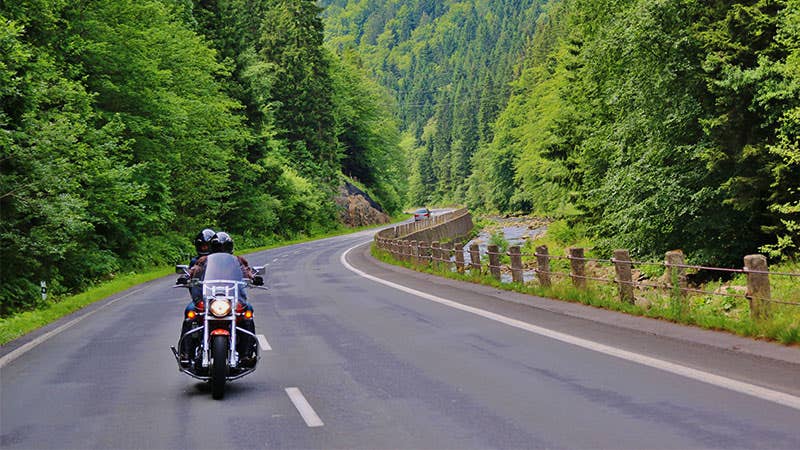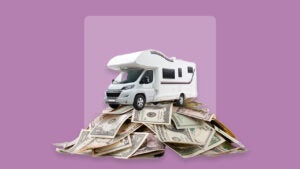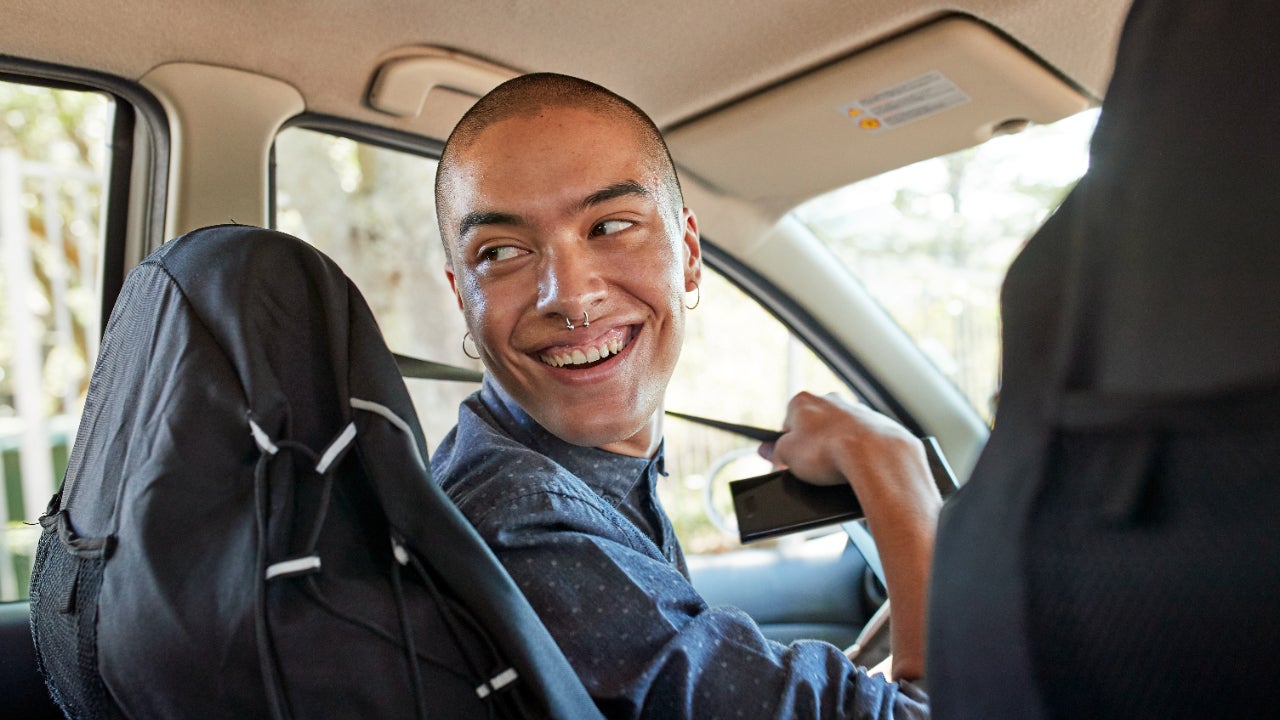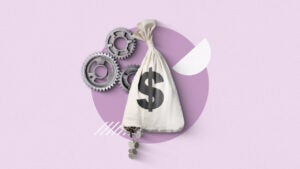Unsecured motorcycle loans: How they work & where to find them

Key takeaways
- Unsecured personal loans don’t use the bike as collateral, which means the lender can’t repossess it if you can’t repay the loan.
- You can use unsecured loan funds to purchase any make, year or model of bike, since the lender doesn’t vet the bike for approval.
- You can find unsecured personal loans for motorcycles at banks, credit unions, online lenders and marketplace sites like Bankrate.
If you want to avoid — or don’t think you qualify for — traditional manufacturer or dealership financing to buy a new or used bike, consider an unsecured motorcycle loan. You won’t have to make a down payment and won’t have to worry about whether the motorcycle meets lender guidelines.
Personal loan lenders only consider your income and credit, which makes the approval process relatively easy. However, unsecured personal loans tend to have higher rates than secured auto loans. Understanding how they work can help you decide if they’re worth it.
How do unsecured motorcycle loans work?
Unsecured motorcycle loans are approved based on your credit history, income and existing debt. You may qualify for a low rate if you have excellent credit and little debt and choose a short term, like three years.
Funding is fast: In some cases, you can receive your money the same day you apply. One major benefit of using an unsecured loan is that you can buy a bike with the title entirely in your name. That means if you default on the loan, your motorcycle won’t be repossessed — though you’ll face calls from debt collectors and potential legal action.

Pros
- Easier approval process
- Faster access to funds
- No lien is filed on your bike

Cons
- Higher rates and fees
- Shorter repayment terms
Secured vs. unsecured motorcycle loans
A secured motorcycle loan uses your bike as collateral. As when you take out an auto loan, the lender has to approve the make, model, mileage, year and so on. It also means if you don’t repay the loan, the lender can repossess your motorcycle.
The lender can recoup the costs if you default on the loan through repossession and reselling your bike. The reduced risk to the lender may mean lower rates, cheaper fees and longer repayment terms than unsecured lenders offer.
Once you find a secured lender to work with, the lender transfers the money to the dealer or seller and files a lien on your bike until you repay the loan. Seeing the pros and cons of secured and unsecured motorcycle loans may help you decide which is best for your financial situation.

Pros
- May come with lower rates
- Dealers may offer rebates and fee waivers
- Longer repayment terms may be available

Cons
- Motorcyle may not meet requirements
- Could lose your bike if you default
- Approval and funding may take longer
Where can I get an unsecured motorcycle loan?
Compare multiple options to see which offers the terms that best fit your budget.
Banks and credit unions
Your local bank or credit union is typically a good place to look for unsecured loan options. You may be eligible for extra discounts based on your banking relationship. Many banks and credit unions offer loans with lower rates than online lenders and no-fee options. However, you’ll typically need good to excellent credit to qualify.
Online lenders
Many borrowers choose online lenders because they offer competitive rates and flexible loan terms – especially if you don’t have stellar credit. Watch out for fees, which can run as high as 10 percent of your loan amount at some lenders. Online lenders also cater to fair and bad credit borrowers who don’t typically qualify for bank or credit union loans.
Marketplace lenders
A marketplace lender like Bankrate provides you with expertly vetted information about several lenders in one place. You can review rates, minimum requirements, fees and pros and cons of all the featured lenders, rather than going through multiple pages on lenders’ websites.
Expert lender reviews are also available to help you with your research before you apply for a loan. If you aren’t sure what you qualify for, you can apply for a loan on the marketplace and receive multiple offers based on basic financial information you provide.
What people online are saying about where to get a motorcycle loan
Unsecured loans got a vote of confidence from motorcycle enthusiasts on a recent r/motorcycles Reddit thread, especially for used bikes in the $5,000 price range. Bike-owners suggest comparing unsecured options before heading to a dealer to make sure you’re getting a good deal.
“If you want to do a private party sale on Facebook and you don’t have $5,000 cash on hand, a personal loan is probably going to be your only option for a used bike at that price,” says one poster.
They suggest comparing the total cost of loans from multiple personal loan lenders with the total cost of a dealership loan. They also note the need to watch for fees:
“Another thing to pay attention to with personal loans are ‘origination fees’ that banks sometimes charge. This is a percentage they take right off the top, so if you apply for a $5,000 loan that charges a 5% origination fee, they’ll take $250 off the top. Meaning, the amount they deposit you for the loan is actually only $4,750.”
5 steps to get the best motorcycle loan
With a little extra research and diligence, you may end up with better terms on your unsecured motorcycle loan. Consider the following if you’re ready to finance a bike.
Shop your loan options
Start with your local credit union and banks to see if they offer any specials for both secured motorcycle loans and unsecured personal loans. Online lenders and marketplace sites should be on your shopping list as well, especially if your credit isn’t great, or you just want to see what you can qualify for with several different lenders at once.
Review your credit
Your credit score will have the most impact on the APR and terms you qualify for. If you’re not sure what it is, you can check for free at AnnualCreditReport.com. Excellent credit borrowers typically get the lowest available rates.
Get prequalified
Select personal loan lenders that offer prequalification to avoid damaging your credit scores. Lenders that offer this will usually do a “soft credit” check, versus a potentially credit-damaging hard inquiry. You’ll typically need to have your address, income and basic banking information handy to get prequalified.
Compare lenders
It’s best to compare the offers of at least three different lenders to see if one in particular stands out. Keep an eye on fees, and take advantage of rate discounts for auto-pay and other perks the lender might offer.
Choose your loan and apply
Once you decide which loan works best for you, you’ll apply for the loan fully. At this point, your credit will be pulled, and you may have to provide bank statements, paystubs, IDs and online banking information to have your funds direct deposited. Remember, unsecured loan funds will go directly to you, so if you’re using them to buy a motorcycle you’ll need to deduct the funds from your checking account first.
Unsecured motorcycle loans for bad credit
One major benefit of unsecured loan lenders is that many offer financing for bad-credit borrowers. Just keep in mind: Bad credit personal loan rates may be over 30 percent, making them a very expensive option for purchasing any vehicle, including a motorcycle.
It may be worth it to boost your credit score to the fair or good credit range before you buy, so you can get a lower rate, longer term and pay less in fees on the financing. Simple steps like paying down credit card balances and keeping all your bills current could go a long way toward keeping you out of the high rates associated with bad credit loans.
Bottom line
Buying a motorcycle with an unsecured loan can be a quick way to borrow money, especially if you find a great deal on a bike from a private owner. There’s no prepayment penalty, so if you fix bikes and flip them, you won’t have to shell out any extra cash to the lender when you sell.
Make sure your budget can handle the higher APR or shorter terms that typically come with unsecured motorcycle loans. And watch out for fees — they’ll be deducted from your loan, which could leave you short of funds needed to buy if you don’t adjust your loan amount for them before you apply.
Why we ask for feedback Your feedback helps us improve our content and services. It takes less than a minute to complete.
Your responses are anonymous and will only be used for improving our website.
You may also like

Pros and cons of startup business loans

How to get an RV loan without breaking the bank

Car loans for students: What to know

What is an unsecured business loan and how does it work?



